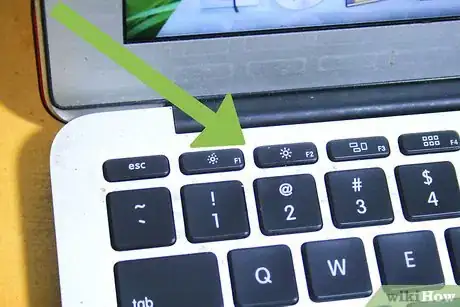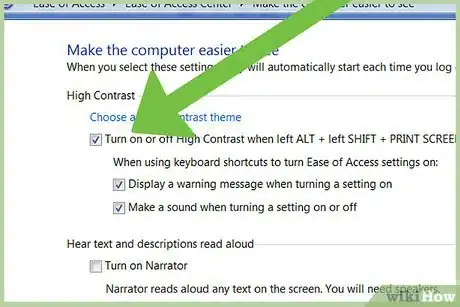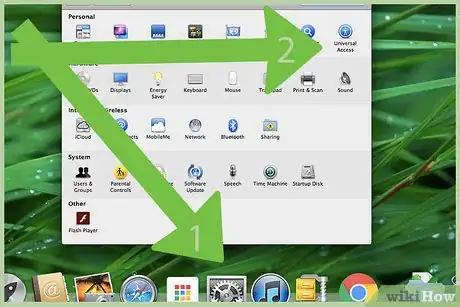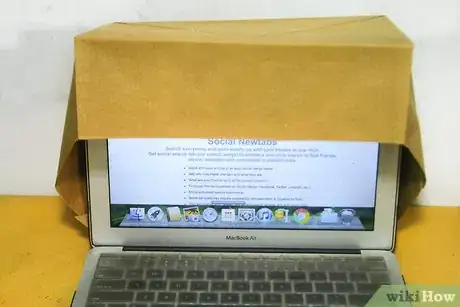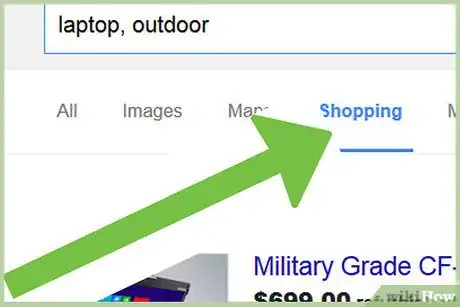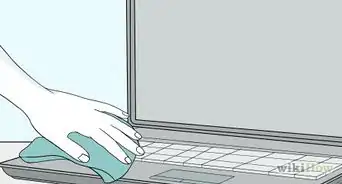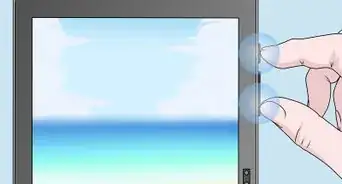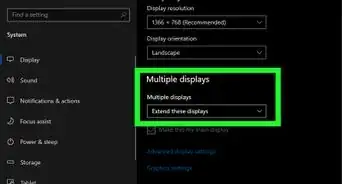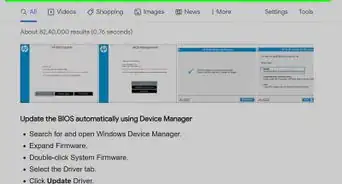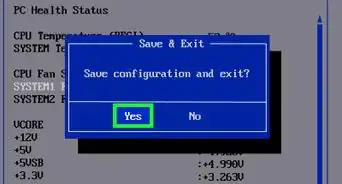This article was co-authored by Luigi Oppido and by wikiHow staff writer, Nicole Levine, MFA. Luigi Oppido is the Owner and Operator of Pleasure Point Computers in Santa Cruz, California. Luigi has over 25 years of experience in general computer repair, data recovery, virus removal, and upgrades. He is also the host of the Computer Man Show! broadcasted on KSQD covering central California for over two years.
There are 7 references cited in this article, which can be found at the bottom of the page.
The wikiHow Tech Team also followed the article's instructions and verified that they work.
This article has been viewed 572,571 times.
There are many ways to improve your laptop screen's readability in the sun, such as adjusting screen brightness, using a laptop hood, and sitting under an umbrella. Even wearing polarized sunglasses and a darker shirt can reduce sun glare. We'll show you which settings to change and how to optimize your environment, and we'll even give you a few tips on searching for the perfect outdoor-optimized laptop. It's time to make your outdoor computing experience less frustrating and more productive.
Steps
Adjusting Your Laptop
-
1Hike up the luminosity (brightness) in the display settings. Higher luminosity usually means high power consumption (screens need the most energy in a laptop). You may need to depend on a power outlet rather than a battery. Bring an extension cord or a backup battery pack.[1]
- On a Macbook, increase brightness with F2 and decrease with F1.
- Non-Apple laptops typically have brightness controls on the top row of keyboard keys, indicated by an icon of the sun and a plus (+) sign to increase, minus (-) to decrease. Depending on your system, you may need to hold down the Fn key as you press the buttons.
-
2Turn on High Contrast Mode.
- On Windows[2]
:
- Press ⊞ Win+S to launch the search bar, then type “ease” into the box.
- When Ease of Access Center appears in the search results, click it to open the accessibility options.
- Click “Make computer easier to see.” Under “High Contrast,” click “Choose a High Contrast Theme,” then click one of the four options with a black background.
- On a Macbook[3]
:
- In the Apple menu, select “System Preferences,” then “Universal access.”
- Click on the “Seeing” tab and scroll down to “Display.” Right now, “Black on White” is checked. Place the check in “White on Black” instead.
- Slide the “Enhance contrast” slider to the right to increase the contrast between dark and light colors. A higher contrast will help you view the screen in sunlight.
- You can toggle quickly between “Black on White” and “White on Black” mode by pressing Control+⌥ Option+⌘ Command+8.
Advertisement - On Windows[2]
:
-
3
-
4Build your own laptop hood. Stores like Target and Ikea sell black square storage boxes/cubes that can be used with certain types of shelves. These boxes also make great DIY laptop hoods—simply slide your laptop inside (with the open side facing you) and use your laptop as normal. You can also try using a regular cardboard box.
Adjusting Your Environment
-
1Work in the shade. Either find a spot under a tree, or set up a large beach umbrella. Not only will this make your laptop screen easier to see, but it'll also keep your laptop from overheating (especially if it's black). If you'd rather keep your body in the sun, keep only the laptop in the shade, and wear a hat with a brim to keep the sun from shining right in your eyes.
-
2Wear sunglasses. A pair of polarized sunglasses can do wonders for your vision in the sun. Plus, sunglasses make you look cool. When shopping for sunglasses, choose amber lenses to increase contrast and make details more clear. If given the option, upgrade to glasses that have anti-reflective coating on the front and back of the lens to effectively reduce sun glare.
-
3Wear a darker shirt. If you're wearing a white shirt, you'll see its reflection in the screen. Switching to a black shirt will reduce that glare more than you'd expect.
-
4Get under a sheet or towel. If you're in a pinch, try draping a piece of fabric—if you don't have a sheet or towel, an article of clothing will do—over both your head and the laptop. While not the most ideal situation, this will almost certainly improve screen visibility in the sun.
Choosing a Laptop For Outdoor Use
-
1Look for outdoor-optimized models.[8] If you have a choice among laptops, or if you're shopping and want to keep your penchant for the outdoors in mind, look for laptops with screens that have a matte-finish screen.[9] Those with a glossy-finish one might look nicer indoors, but they'll reflect the sun all too well if you take them outside. Matte-screen laptops are few and far between these days, but you may have luck finding a used or refurbished model.
-
2Find a glossy-screened laptop that works great in the sun. Now that glossy screens outnumber the matte, your options may appear limited. But not all screens are created equal—even some glossy screens have design enhancements that make them perform well in the sun. When deciding between different glossy-screened laptops, look for keywords in the advertisements/descriptions like “Outdoor View,” “I/O,” “Indoor/Outdoor,” or “Enhanced Outdoor.”
-
3Buy a “rugged” or “outdoors” laptop. Some laptops with outdoor-friendly screens also have other features beneficial for outdoor use, such as a thick chassis that protects your laptop if it drops. These laptops nearly always have the word “rugged” or “outdoor” in their product names. Some of these laptops are even waterproof. Search online for reviews of these models, or drop by your local computer store to ask for recommendations.
Expert Q&A
-
QuestionWhy does my laptop get dim when I unplug it?
 Luigi OppidoLuigi Oppido is the Owner and Operator of Pleasure Point Computers in Santa Cruz, California. Luigi has over 25 years of experience in general computer repair, data recovery, virus removal, and upgrades. He is also the host of the Computer Man Show! broadcasted on KSQD covering central California for over two years.
Luigi OppidoLuigi Oppido is the Owner and Operator of Pleasure Point Computers in Santa Cruz, California. Luigi has over 25 years of experience in general computer repair, data recovery, virus removal, and upgrades. He is also the host of the Computer Man Show! broadcasted on KSQD covering central California for over two years.
Computer & Tech Specialist When you unplug your laptop, it goes into power saving mode. That usually has a different screen setting than when you're in AC adapter mode.
When you unplug your laptop, it goes into power saving mode. That usually has a different screen setting than when you're in AC adapter mode.
References
- ↑ Luigi Oppido. Computer & Tech Specialist. Expert Interview. 24 February 2021.
- ↑ http://windows.microsoft.com/en-us/windows-vista/turn-on-high-contrast-and-change-the-settings
- ↑ http://etc.usf.edu/techease/4all/vision/how-do-i-change-the-display-contrast-in-mac-os-x
- ↑ http://www.diyphotography.net/ikea-hack-a-5-99-foldable-laptop-and-monitor-hood/
- ↑ Luigi Oppido. Computer & Tech Specialist. Expert Interview. 24 February 2021.
- ↑ http://www.compushade.com/viewarticle.php?page=3
- ↑ http://www.nushield.com/dayvue_technology.php
- ↑ http://www.pcworld.com/article/235396/how_to_work_outside.html
- ↑ Luigi Oppido. Computer & Tech Specialist. Expert Interview. 24 February 2021.
About This Article
1. Increase the brightness in the display settings.
2. Enable High-Contrast mode.
3. Boost contrast.
4. Buy a laptop hood or sunscreen.
5. Build a laptop hood from a box.
6. Work in the shade.
7. Wear a darker shirt.
8. Buy an Outdoor-View laptop.
